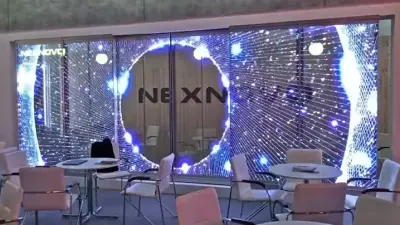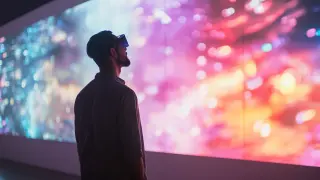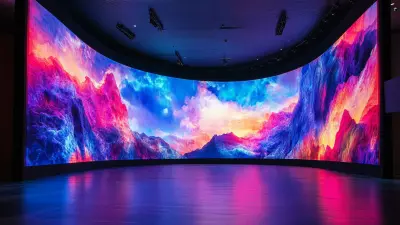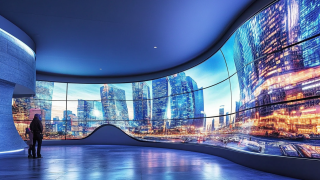
-
Home
-
Products
-
About Us
-
Case
-
News
-
FAQ
-
Contact Us
Leave Your Message

Over the latest timeline, to say the automotive industry has really evolved technologically-and therefore with such novel advanced solutions that our whole interaction with the car has changed. Among these innovations, the Transparent Film LED Car Screen is one of the most looked-after products offering an amalgamation of function and aesthetics. This technology is an advanced product catering to an out-of-the-world experience for a driver and passengers while adding on some functional inputs-a must-have in today's standard consumer existence. Sending information and entertainment through transparent displays, this is a technology that does not obstruct the architecture of the original design.
Shenzhen Qianhai Hengyunlian Technology Co., Ltd. seeks to take the lead in the development of innovative Transparent Film LED Car Screens manufactured to internationally acceptable standards and specification for quality and transparency. With innovation at the core of our identity, we are always on the lookout for uncharted waters in display technology environment in order to make sure that our products comply with international regulations and are also best differentiators in the marketplace. This blog will detail the global benchmarks that act as a framework for the practice of manufacture and installation of Transparent Film LED Car Screens, with bearings on their influence on automotive development and the future of vehicle technology.
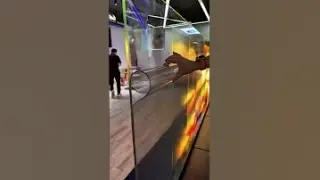
Industries have undergone a total shift with Transparent Film LED technology when it comes to digital displays and their applications in automobiles. These displays maintain the visibility of the glass even while they exhibit colorful images, thanks to a transparent film made of layers embedded with LEDs. This new concept not only satisfies the beauty but also helps the driver while providing an important distinction: That being information is shown without obstructing the driver's view. The world's largest movie screen has commenced the trend of larger immersing displays used in automotive as well as entertainment. Progressing further, events like CES 2025 have put on display some of the world's latest technologies, showcasing the importance of transparent displays that can easily hide into the environment. With a growing demand for spectacular visual experiences, Transparent Film LED Technology stands on the frontline, offering unimaginable opportunities for design and functionality across industries.
Transparent Film LED technology is causing a stir in how one perceives displays, more so in the automobile field. The material used has a significant consequence on how well these screen types perform and appear. Quality substrates for the production of such displays are polyimide and other variants of flexible films compatible with precision and design while exposing and putting up against environmental conditions. Furthermore, advanced LED chips have been mounted on these displays with brighter colors yet high brightness, making it useful within several environments of light.
As is usual in an evolving industry, innovations in material science keep stretching the limits of what is possible. Trade shows like CES reflected the latest advancements in Transparent Film LEDs with displays from many companies, all demonstrating the next-generation technology. As demonstrated by the newest innovations in large-scale displays such as gigantic screens for entertainment venues, the future of this type of technology in cars will likely augment their aesthetics as well as form a new age of digital experiences while traveling on the road.
Transparent film LED screen technology has advanced considerably over recent years. The emergence of global standards for this technology marks an important step for assuring quality, safety, and compatibility across different markets. As transparency of displays improves, it aids in other applications rather than just automotive technology, such as advertising, not-so-subtle architectural uses, and so on. Adherence to these standards will only ease the growing use of this innovative technology in different sectors.
In all fairness, the unveiling of humongous displays like the recently shown immersive screen in Las Vegas demonstrates how transparent film LED technology can change huge-scale business. The elaborate displays provide mesmerizing visuals. The benefit of being able to do so with adherence to global standards would be inestimable. Embracing these standards is firmly establishing to stimulate market development with the innovative display technologies, while ensuring some level of sustainability and predictability in performance.
The LED technology of Transparent Films is changing the face of the experience-from-visual content areas. It provides innovativeness for many applications, including as an automotive display. To allow sharing of information without removing the view of the driver as it could have made by other methods, the use of transparent film LED screens is becoming common in automobile enhancement. In other words, the fusion of high-quality images with transparent displays can show navigation and vehicle diagnostics directly from the windshield.
Indeed, the most recent developments of such capabilities seem promising, especially with the advent of large-format display projects such as that at the Sphere in Las Vegas. Such monumental screens manifest the greatest possibilities of utilizing transparent film LED technology to really push the boundary of visual participation. Looking forward, these innovations will not only constantly open up new realms in the industry but also bring crowds into more dynamic and interactive environments, through which the former will significantly change mundane experiences to high-profile events into compelling visual spectacles.
Transparent film LED screens are rapidly gaining popularity within the automotive industry, presenting countless innovative applications that serve to enhance aesthetics and functionalities. These screens can easily be applied to windows, as they can provide critical information to the driver without obstructing the view. Imagine your navigation, speed, and alerts being projected right in front of you while that same screen entertains you while the car is parked.
The latest in transparent film technology were featured at CES 2025, exhibiting their potential for in-cabin experiences. With the proper application, these displays could create entertainment interior spaces for passengers to immerse themselves in a world of media. Great examples of these types of installations are the huge screen in Las Vegas, and therefore the automotive industry could be seeking similar opportunities. In this way, the new design could collide with the need for practical use cases for everyday driving.
The automotive industry is being significantly adjusted by such transparent film LED car screens that provide unmatched visibility and interactivity for car occupants. These screens beautify the vehicle's interiors while serving as a useful display of information without hindering the driver's sightline. We saw in CES 2025 how technology is leading the industry toward ever-increasing display functionality, with transparent film LED technology at the forefront serving both functional and design objectives.
One of the major benefits of transparent film LED car screens is that they provide seamless integration with the interior of the car. Besides providing navigation and vehicle status data in real time, they also add to the 'airiness' of feeling within the cabin. With minimized distractions, this technology improves safety and enhances the driving experience as engaging as that of large immersive displays showcased at tech exhibition events. With the trend of advancement, it is expected that more vehicles would have transparent screens merging with functionality.
New dawns of innovation are heralded for display technology by the need for transparent film LED car screens. These screens bring an advanced definition visual experience and the grave challenge of their production and end-of-life disposal. With this set-up on the list, it has become high time to bring sustainability into consideration and push the manufacturers towards using greener materials and processes in lessening their carbon footprint.
In this world saturated with huge visually attractive images-from the massive movie screens recently opened in Las Vegas-there's little to think about except what these technologies mean from the environmental point of view. Transparent film LED production should give priority to sustainably sourced components and recycling approaches. Embracing these qualities will make the automotive industry a great step toward a much more sustainable future for enhancing consumers' experience with cutting-edge display technology.
The demand for sophisticated technological solutions continues to rise for the automobile industry; hence, transparent film LED screens are turning out to be a boon of sorts. These screens, as distinct as they are, prevent obstruction and curtail design options just like the conventional ones; they instead add an elegant outline and a non-obtrusive enhancement to improve driving. They are designed to be complimentary to the aesthetics of the car, making it suitable for advertising, navigation, or entertainment purposes, while providing dynamic content.
Well, CES 2025 has shown off some amazing new capabilities that spark some of the discussions on what these systems may offer. While traditional LED displays are the most popular due to their reliability and brightness, transparent screens make a difference precisely because they keep visibility, but offer so much more freedom in design. As filmmakers unveil gigantic screens to mesmerize the audience, so the automotive industry has its own ambitions for these technologies in building an immersive experience on the road.
This time, the upcoming diverse and futuristic-led technologies would surely give life to the industry, including the automotive industry. The latest developments now exhibit how transparent LEDs can work hand in hand with the design of automobiles, for further beautifying the product and functionality of the display. Enhanced technology has been presented to consumers that offer more information exchange other than just rethinking the experience enjoyed by passengers.
Again, large transparent displays have realized a completely new shift in content consumption. It has all-new applications that blend digital content and reality and immerse their viewers into ways never been imagined. Much of this can also be seen in the latest entertainment products, with giant displays changing the traditional viewing context. Investing in transparent film LED technology will open up a huge space for different industries in terms of digitization, thus continuing to revolutionize visual interactions.
Transparent film LED screens for cars are highly visible now not only because of their aesthetic appeal but also because of functionality. They certainly have their share of challenges and hurdles, more so in light of scrutiny from regulatory authorities and environmental standards changes. This change has given rise to even more questions regarding materials and technologies used for automotive displays, which may probably influence the very manufacturers of transparent film LED screens.
This new discussion on emissions standards certainly illustrates the fine line between innovation and regulation. This will mean that as regulations get tighter, efficiency and longevity will probably need to be balanced with technology of transparent film LED screens. Additionally, lawsuits on California's right to set its emissions standards might further complicate things for the uptake of new technologies into the automotive sector. Manufacturers must stay ahead on these regulatory adjustments so that their products perform well under the new changes but can also eventually conform to those changes.
Transparent Film LED technology is an innovative display system utilizing a layered film embedded with LEDs, allowing for vibrant images to be displayed while maintaining visibility through the glass.
This technology provides drivers with vital information such as navigation and alerts directly in their line of sight without obstructing their view of the road.
CES 2025 highlighted the latest advancements in Transparent Film LED technology, showcasing its potential uses in both automotive and entertainment sectors.
Important environmental concerns include the sustainable sourcing of materials, eco-friendly production processes, and proper recycling practices to minimize the carbon footprint.
These screens can transform vehicles into entertainment hubs by displaying media content and providing interactive functionalities without obstructing the driver's view.
The growing demand for captivating visual experiences encourages the automotive industry to explore innovative applications of Transparent Film LED technology to improve both design and functionality.
Yes, these screens can be seamlessly integrated into car windows and dashboards, enhancing both the aesthetic appeal and practical functionality of vehicles.
Manufacturers are urged to adopt eco-friendly materials and processes in the production of Transparent Film LEDs to prioritize sustainability and reduce environmental impact.
Large-scale transparent displays, such as those recently unveiled, provide immersive experiences that enhance entertainment value in settings like theaters and potentially within vehicles.
The technology offers unprecedented design and functionality options across various industries, likely leading to further innovations in visual experiences and sustainable practices.
